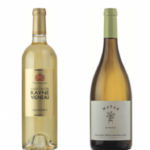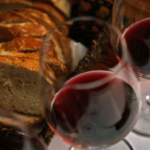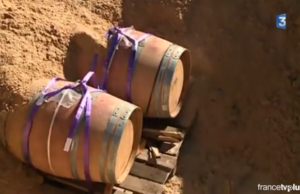Walk the Walk, Talk the Talk – Wine Terms You Should Know

When it comes to describing wine, entire glossaries exist with literally hundreds of terms. For a budding wine enthusiast, trying to understand what all of these wine terms truly mean can be a bit overwhelming and intimidating. But there are a handful of these wine terms that are used most commonly, and understanding just these terms alone will allow you to speak and learn about wines more comprehensively. If you are just beginning to learn about wine, this list will arm you with the basics.
Acidity – This term refers to the acid that occurs naturally in wine grapes. The cooler the environment the grapes are grown in, the higher the acidity these grapes will have. On the other hand, warmer climates equal grapes containing more sugars. Acidity, introduced in the right proportion, can help to balance a wine when it is blended with the sugars. If a wine is too acidic, it will taste sour. If there is not enough acid present, the wine will taste dull and flat.
Aroma/Bouquet – The aroma/bouquet of a wine refers to the odors that are created while the wine is aging. These scents can resemble herbs, flowers, fruits, grass, vanilla, butterscotch, chocolate, or even tobacco.
Balance – There are four primary elements used to categorize wine (alcohol, tannin, fruit and acid.) Describing a wine as balanced means that no one element overpowers the others.
Body – The body of a wine refers to the “weight” or “texture” of how the wine feels in the mouth and on the palate. When a wine (once swallowed) leaves a rich flavor that tends to linger, it is described as a “full-bodied” wine.
Complexity – Describing a wine as complex means that there are a variety of flavors and aromas that are layered to create a wine with a complex, rich character. These characteristics unfold, one at a time, as you smell a wine, taste it, let it rest in your mouth and then swallow it.
Dry – In the simplest terms, dry wines are absent of sugars. Typically, the longer the wine ages, the less sugars it will retain. The drier wines tend to be Merlots, Pinot Noirs and Cabernet Sauvignons.
Finish – The finish that a wine has refers to which flavors and textures remain on your palate after you have swallowed it. If a wine has a distinctive flavor that lingers in your mouth, it can be characterized as a good varietal.
Fortified Wine – Wines that have been fortified have had a spirit added (such as brandy) to bump up their alcohol content. Initially, this method was used to preserve the wine and to halt the fermentation process in order to keep the wine sweet. A few examples of fortified wines include Marsala, Sherry or Port. These wines are often used by chefs to intensify the flavor when they reduce a sauce.
Oak – Oak is the wood that is used exclusively in making barrels and casks to store wines in while they ferment and age. It adds tannins (see “tannins” below) and gives the wine a unique flavor. Oak adds a deep, rich, complex flavor to the wine. When it comes to the right amount of “oakiness” a wine should contain, it is really a matter of personal preference.
Oxidization – When wine is exposed to air, oxidation occurs. This can be done either intentionally or unintentionally. Oxidation causes chemical changes to take place, and in some instances it can make the wine taste stale. As the oxidation process occurs, the wine takes on a dark brown hue.
Residual Sugar – This term refers to the sugar that remains in the wine after the aging process is complete. Often times, additional sugars are added into the wine to increase the sweetness as well. Dry wines have very little residual sugars – .01-.02%. Dessert wines can contain up to 28-30%. The later you harvest a grape, the sweeter it will be.
Tannin – Tannins are found in the stems, seeds and skins of grapes. Tannins are also most prevalent when oak barrels are brand new and used for the very first time. Tannins significantly influence the flavors and aromas of wine, and contribute to the dryness of the finished product.
Varietal – The varietal of a wine refers to the actual grape that was most predominantly used in making the wine. In order for winemakers to label their wine with the variety of the grape, it must contain a certain percentage of that grape (percentages vary by region.)
Taking a little time to familiarize yourself with these terms will make your wine-tasting adventures much more interesting and informative, and you will learn which wines you prefer based on the terms a wine crafter uses to describe a particular wine.



















